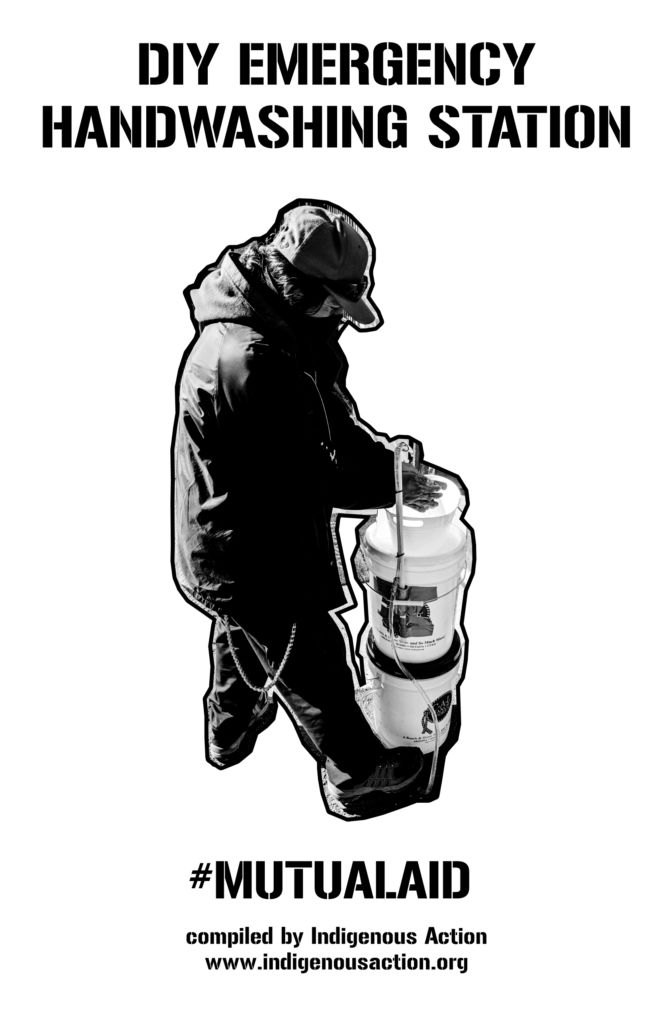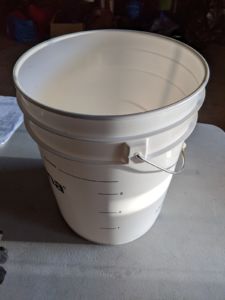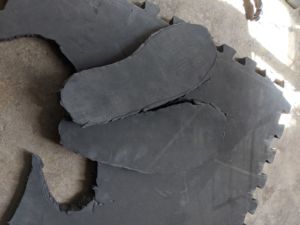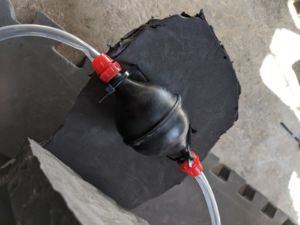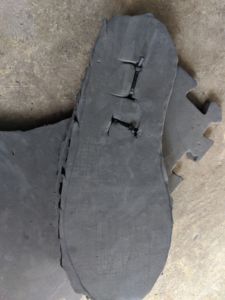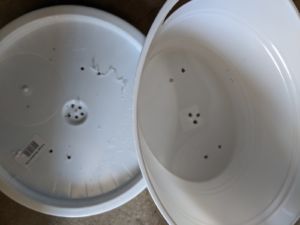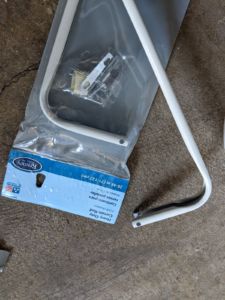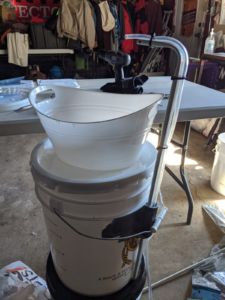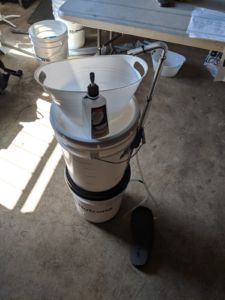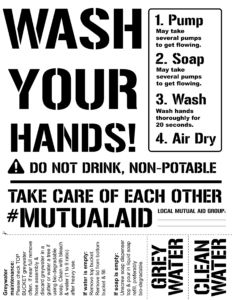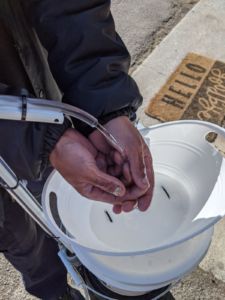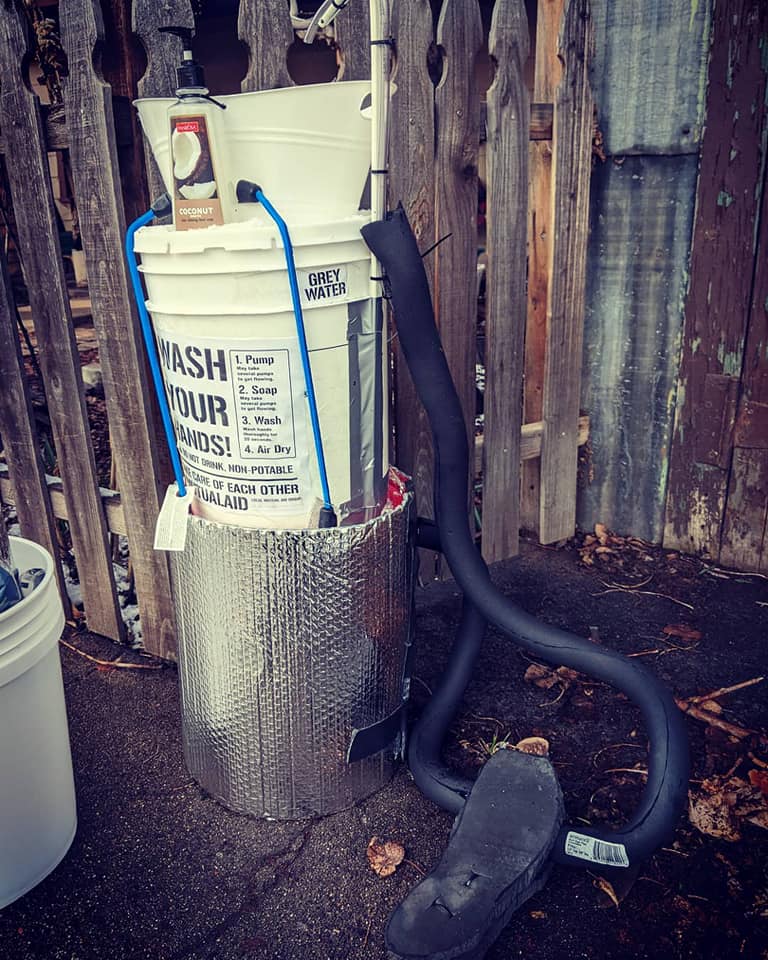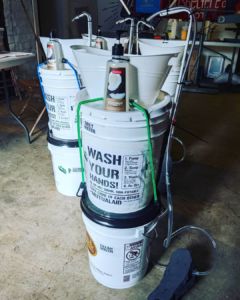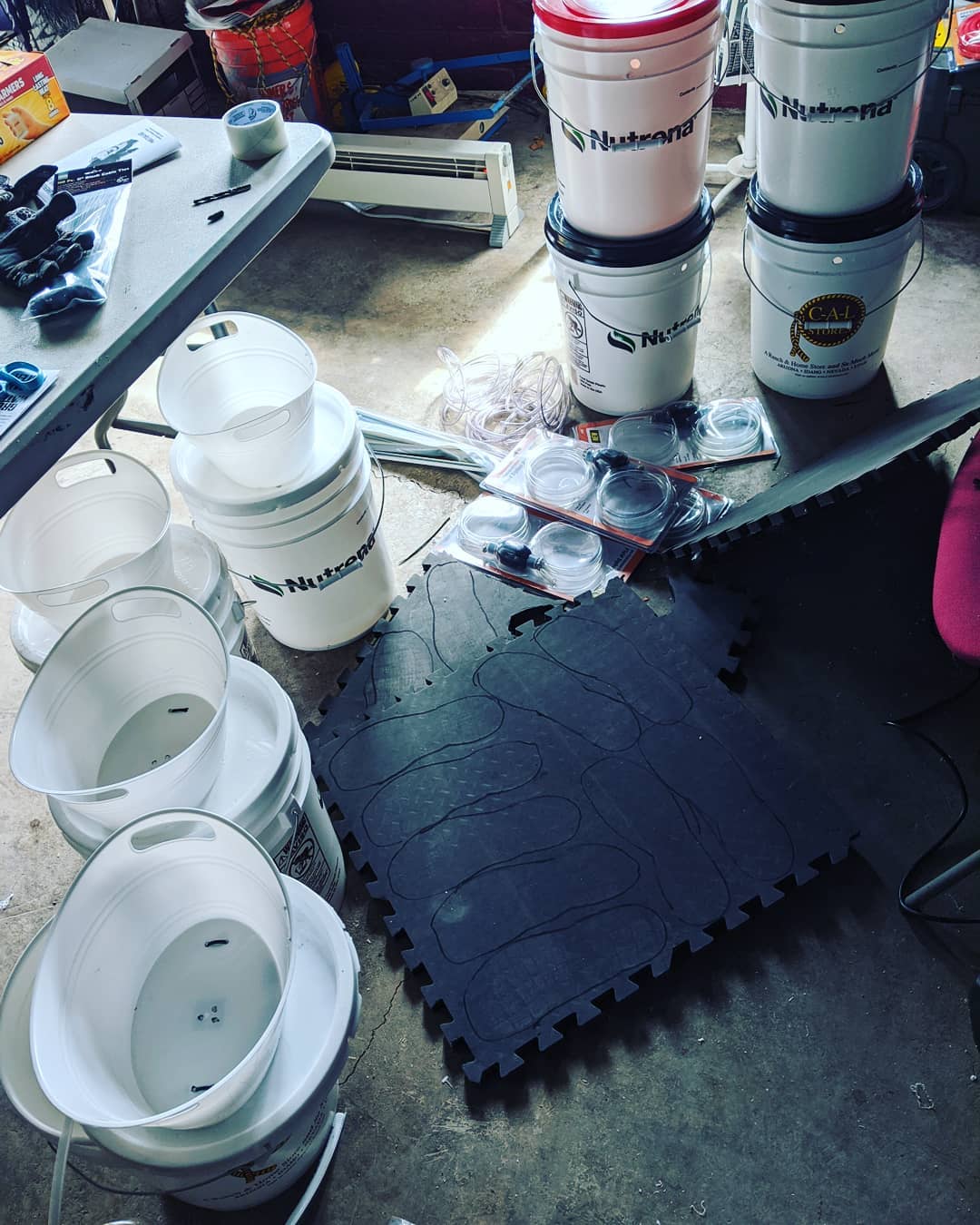We offer this ‘zine in the midst of the COVID-19 pandemic in the Spring of 2020. Our unsheltered relatives cannot simply “stay home if they are sick” and “constantly wash their hands” as instructed by callous politicians who, predictably, had no plans to ensure the wellbeing of our relatives.
 We’ve assembled this DIY emergency hand washing station (based on several other models) as a way to support our relatives on the streets. Please replicate and improve these plans and ask unsheltered folx where they would be most useful to them. Let’s take care of each other. Capitalism is pandemic. Colonialism is a plague.�
We’ve assembled this DIY emergency hand washing station (based on several other models) as a way to support our relatives on the streets. Please replicate and improve these plans and ask unsheltered folx where they would be most useful to them. Let’s take care of each other. Capitalism is pandemic. Colonialism is a plague.�
If you purchase all the materials they cost about $25-30 each to make (not including some extras like duct tape etc).
These can be made in about 20-45 minutes each (much less time if you are working on multiple at once.)
Most supplies listed can be donated, scavenged, or liberated.
We will update this page with more info and mods/tips, please leave your ideas/mods/etc in comments below! SEND US YOUR BUILD PICS & WE’ll POST THEM BELOW!
PRINTABLE ZINE PDF (1.1MB): DIY Emergency Handwashing Station zine-PRINT
READABLE PDF (12MB): DIY Emergency Handwashing Station zine-READ
SUPPLIES:
5-gallon buckets (x2)
Bucket lids (x2)
Fluid siphon
Rubber bulb kind, test the ones you have access to before getting them in bulk.
Small oval tub/bowl
For wash basin, oval shape leaves room for soap dispenser.
Foam mat
Has to be thick enough to make sure pressure from pumping won’t smash the bulb over time.
Curtain rod
With L bent shape, metal cheap kind, they come in packs of two.
1/2” tubing (approximately 2 feet)
Tubing size depends on the connection to your Fluid siphon.
8” Zip ties (at least 10)
OPTIONAL:
1” Diameter PVC pipe (4-5 inches length)
This is just to hold the tubing assembly in place ands make it easier to remove.
1/2″ plastic tubing coupler (x2)
To connect tubing if the Fluid siphon tubing is too short.
EXTRAS:�
Duct Tape
Sharpie
Packing Tape (to laminate signs)
Printer & paper
TOOLS:
Drill with 1/2” bit and 3/16” bit
*Though in a pinch all holes can be made with a knife.
Sharp knife
Scissors or wire cutters to cut zip ties
Hand saw (optional, for cutting PVC)
1. PREPARING THE CLEAN WATER (BOTTOM) BUCKET:
Use the sharpie to mark a spot about an inch from the rim of the bucket. Drill a hole with the 1/2” bit. This will be for the siphon intake so make sure it fits. If it is too snug widen the hole. You can wrap duct tape on the siphon intake tube if it is too loose.
Put one of the lids tightly on the bucket and set aside.
2. MAKING THE PUMP:
Using the sharpie trace two large foot prints on the Foam Mat. Cut them out with a sharp knife.
Place the two foot cutouts on top of each other and make two incisions near the heel and two more right above those going along where the arch would be. The cuts need to be just big enough for zip ties to fit through.
Push the blade all the way through so that each slit is lined up on both foot cutouts.
Put zip ties through the slits and secure.
Cut the excess plastic from the zip ties (do so with every zip tie you secure from now on)
Now open the front of the two sandwiched foot cutouts and place the Fluid siphon so that the tubes extrude from the sides. With the sharpie, mark right above and below where the tubes connect to the bulb pump.
Remove the Fluid siphon and make incisions. Replace the Fluid siphon between the foot cutouts and secure with zip ties.


3. MAKING THE WASH BASIN & GREY WATER (TOP) BUCKET:
The small oval tub/bowl will be our wash basin. Use the sharpie to mark two spots an inch apart on the left side of the wash basin, do the same thing on the right side. In the middle of the wash basin mark three spots in less than 1/2” apart for drainage holes. Drill holes on your marks, some plastic bins may crack so go slow!
Place the wash basin on top of a bucket lid and use the drilled holes to mark drill points with the sharpie.
Remove the wash basin and drill the marked holes through the lid.
Line up the holes you made on the wash basin and the lid then secure the left and right holes together with zip ties . Dont worry about leaks coming through these holes, if they drain too much patch them with duct tape.
Secure the lid to the bucket.
Place the top bucket on top of the bottom bucket.
 4. TUBE/SPOUT & PUMP ASSEMBLY
4. TUBE/SPOUT & PUMP ASSEMBLY
Take one of the curtain rods out of the package and place it so that “L” bend of the rod is above the wash basin (about 4-6 inches). You can either duct tape the curtain rod to the top bucket or you can use the 1/2” PVC pipe section as a guide. If so, duct tape the PVC pipe in the middle of the top bucket and slide the curtain rod through it.
Connect the Fluid siphon intake tube to the bottom bucket (through the 1/2” hole). Make sure that the tube is long enough to go to the bottom and not get kinked, if not, connect the additional 1/2” tubing (you can just duct tape it or use a coupler.)
Bring the other section of tubing up through the PVC (if used) and make sure it is long enough to extend over the curtain rod.
Now secure the tubing to the curtain rod with zip ties (making sure not to pinch the tubing too much).
Carefully bend the curtain rod down slightly to ensure the water pours into the center of the wash basin.


 5. FINAL ASSEMBLY
5. FINAL ASSEMBLY
Grab the soap dispenser and place it near the front of the hand washing station (just pick a side to be the front, we put our foot pump on the right so we figured that was the front).
Make two marks on each side of the soap dispenser about 1/2” down from the top of lip of the wash basin. Remove the soap and drill holes on the marks. Secure the soap dispenser to the wash basin with a zip tie (make sure the zip tie is below the pump so you can screw off the top to refill).
Take off the top bucket and remove the foot pump tube from the bottom bucket.
Fill up the bottom bucket until water is just below the foot pump tube.
Reassemble the wash station and test.
It takes several pumps get water flowing.
You may have to make adjustments to tubing so that it is out of the way and people dont step on it while pumping. This can also be duct taped.
Print out our hand washing station use template from www.indigenousaction.org, make your own, or simply write on the buckets with sharpie to let folx know how to use and maintain them.

 NOTES:
NOTES:
Make sure to write on the bucket “Not for Drinking – Non-potable Water.”
The top bucket will need to be cleaned after heavy use. Prepare a bleach & water solution (1 part bleach to 9 parts water). Use rubber gloves. Remove the lid, rince and then scrub with bleach solution. Replace the lid.
If no water is coming out of the spout, check the pressure from the Fluid siphon, some cheap siphons take a lot of pumping. We initially had some faulty siphons and had to replace them.
Insulate these in cold weather with blankets, a couple hoodies, or we figure those reflective insulated foils they make for vehicle windshields would work well and can be easily found at thrift stores.
You may want to consider securing the washing station to a tree or post to ensure it doesn’t get easily knocked or blown over. This could be done with tie downs, wire, rope, more duct tape, etc! Just make sure it’s not too much trouble to maintain.
You may want to schedule checking on the buckets to ensure the clean water is full and the grey water is being emptied. In high use areas this may need to occur multiple times a day or multiple hand washing stations may need to be placed in those areas. In our area we figure we will check each station once a day.
You could put your contact on them or simply ask unsheltered folx and neighbors to help maintain them.
We’re considering drilling a hole in the middle of the grey water top bucket and connecting about 3-4 feet of tubing so the grey water can drain off and they don’t overflow.
We’re also considering placing a hose intake on the bottom clean water bucket so a garden hose can be connected for easier refilling.
If you come up with other mods and ideas email us at: indigenousaction@gmail.com.
UPDATES:
Modification for ensuring clean water tube reached to bottom of clean water bucket:
A rigid 1 foot section of plastic tubing larger than your clean water bucket tubing can help ensure that the water is drawn up easily from the bottom of the bucket. (pictures coming soon).
From the United Front Against Displacement in the Bay Area:
We discovered that no water could flow through the Siphon Bulbs we bought! We were able to fix this by attaching a silicone fuel check valve to the end of the hose which sits in the clean water bucket. We also added some washers to that end of the hose as we found it was too coiled and would not sit properly at the bottom of the bucket unless it was weighed down. We figured that, if other people had access to similar supplies (we used whatever we could find at home depot, ace hardware and autozone) it might be helpful to include these tweaks in your guide.
Insulating:
You can insulate the emergency hand washing stations with self sealing rubber pipe insulation (6′ for $6 covers one station) for the tubes and reflective insulation (16″x25′ for $16.25 covers quite a few buckets) for the buckets. Just need to cover the bottom bucket enough so it doesn’t freeze or can thaw quickly, you can also do multiple layers. The tubing doesn’t need to be insulated all the way up as the water usually falls down the tube quite a ways. The foot pump bulb may freeze, that’s harder to insulate so we’re testing some fixes. It just may need to be maintained by pouring hot water over it in the morning. Otherwise during the day these all thawed and held up well.
Securing the buckets together:
We used a 24″ bungee cord. We pulled it between the soap dispenser and basin then secured it to the lid of the bottom bucket. We see this as a necessary measure for the kind of use these will get.
Refiling tips:
Gamma lids make refilling easy. You can also make multiple bottom buckets for refilling. You’ll just have to swap out the bottom buckets rather then remove and refill. Duct tape the tube hole of filled the bottom bucket for ease of transport.




#UNSHELTEREDREFUGEES #mutualaid
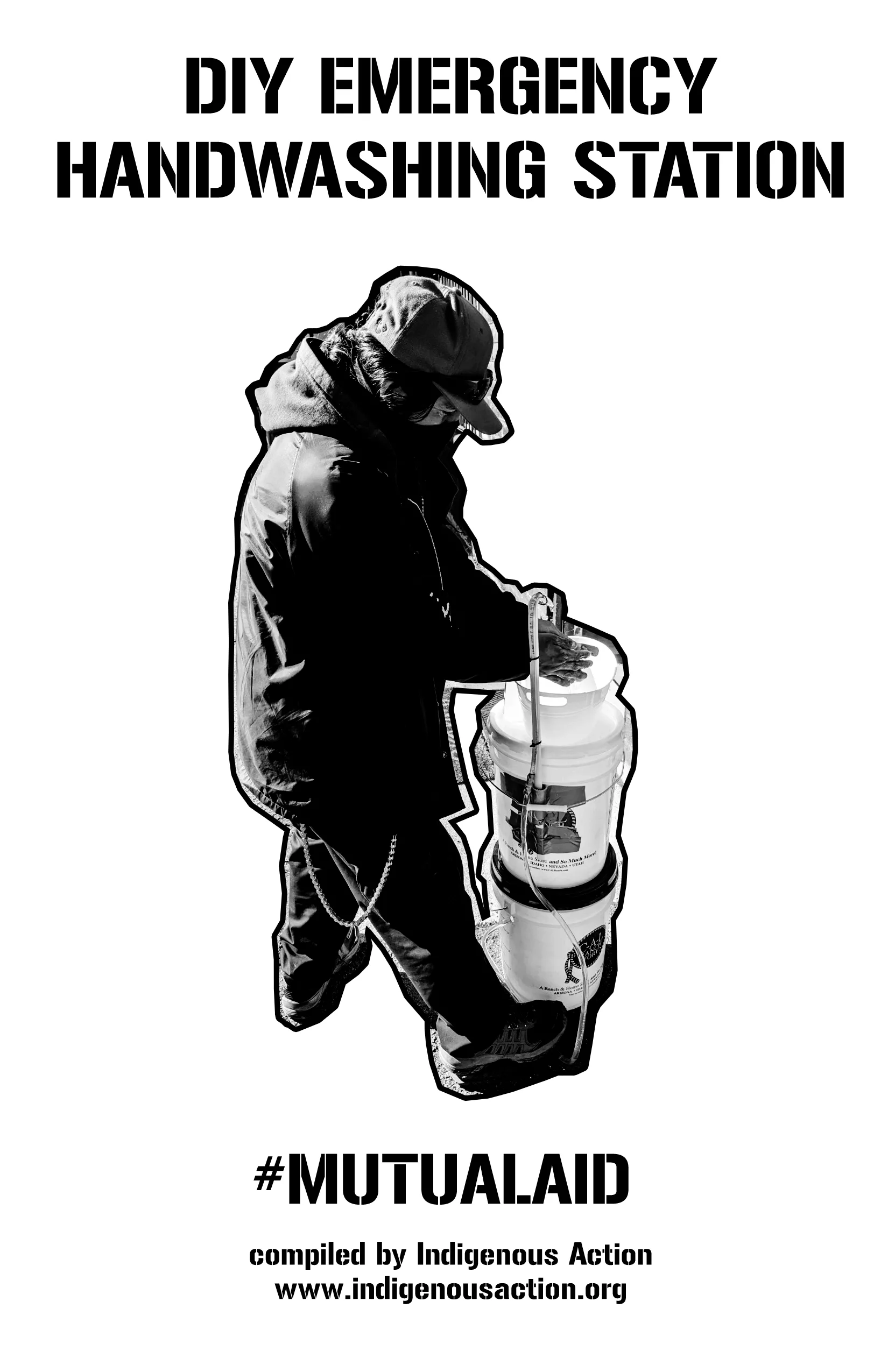

 Commentary & Essays11 years ago
Commentary & Essays11 years ago
 anti-colonial5 years ago
anti-colonial5 years ago
 Feature Front1 year ago
Feature Front1 year ago
 anti-colonial5 years ago
anti-colonial5 years ago
 #nonukes12 years ago
#nonukes12 years ago
 anti-colonial3 years ago
anti-colonial3 years ago
 #nonukes15 years ago
#nonukes15 years ago
 #policestate5 years ago
#policestate5 years ago
